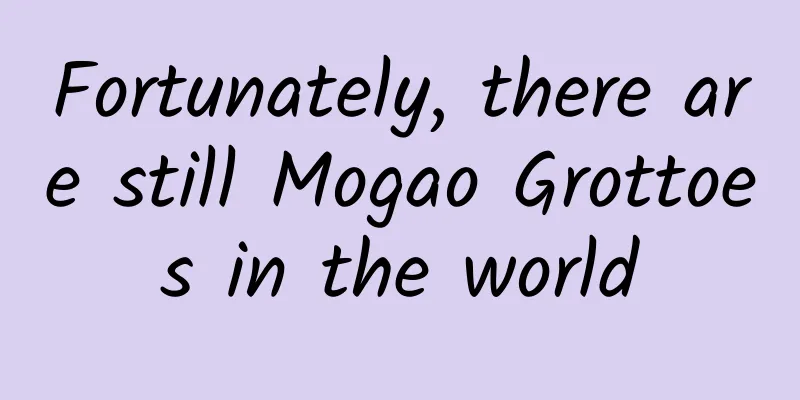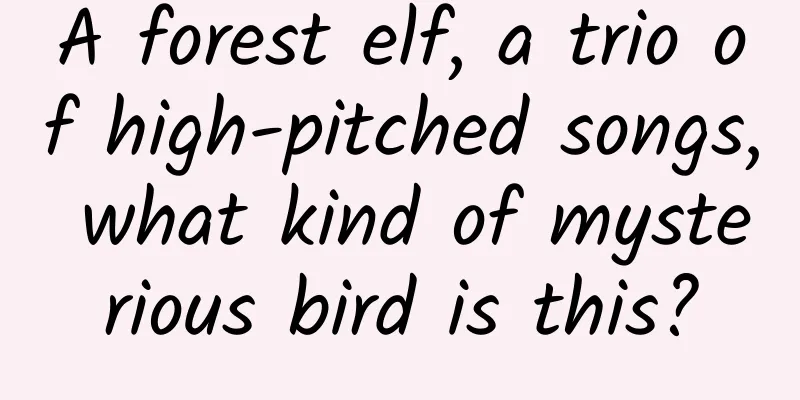Fortunately, there are still Mogao Grottoes in the world

|
Dunhuang Mogao Grottoes It should be ignored Because it's so desolate there Only a piece of sand (Sketch of the location of Mogao Grottoes, drawn by @吴昕恬/Planet Research Institute) ▼ However Countless people come here They form a millennium-long picture of the human world From the Sixteen Kingdoms to the Yuan Dynasty (Please watch in horizontal screen, some figures in the Mogao Grottoes murals, picture source @Dunhuang Research Institute & Being in Beihai North, map @Wang Tianyi/Planet Research Institute) ▼ who are they? What happened? Why are you here? This is a story about the coexistence of suffering and beauty In the sorrow and hardship of the world Fortunately, there is Mogao Grottoes Can entrust thousands of beautiful Learn about the story of Mogao Grottoes We need to go back more than 1,600 years At that time, there was no Mogao Grottoes in the world. 01 Quiet cliffs - The First Space - Southeast of Dunhuang City is a vast sea of quicksand There is little sign of life anywhere. But in the view of the monk Le Zun This is an ideal holy place (Please watch in horizontal mode, Mingsha Mountain is hit by sandstorms, photographer @汤海磊) ▼ This is the year 366 AD Dunhuang is the gateway from the Central Plains to the Western Regions. The monks who traveled between the two places often stopped here. It has a strong Buddhist atmosphere After Le Xian's travels around the country On Mingsha Mountain, I saw thousands of golden lights, like the Buddha appearing. He believed that it was his sincere practice that brought him inspiration. I decided to stop here. And there happens to be a place Ideal place to live (Looking towards Sanwei Mountain from Mingsha Mountain, photographer @徐海洋) ▼ It is 25 kilometers away from the ancient city of Dunhuang. On one side is Mingsha Mountain covered with quicksand On one side is the Sanwei Mountain with its numerous rocks and peaks. There is a natural cliff where the two meet. For Le Xian This is a perfect cliff. The Dangquan River flows slowly under the cliff. Opposite is the golden Sanwei Mountain At the same time, this place is far away from the city and quiet enough (Please watch in horizontal mode, Mogao Grottoes at the junction of Mingsha Mountain and Sanwei Mountain, photographer @徐海洋) ▼ Le Xian is on this cliff Digging a cave The cliffs act as barriers Isolated from the scorching sun and sand It also isolates us from the hustle and bustle of the world. Le Xian climbed up the cliff and practiced with piety (Mogao Grottoes North Caves, Le Zun excavated the first cave of Mogao Grottoes in 366 AD, picture source @Visual China) ▼ Le Xian won't know He opened a torrent that lasted for a thousand years. It will generate enough power The fate of countless people Get out of this desert Gobi Until the world was shocked Today, more than 1,600 years later There are 735 caves of various sizes on this cliff. Total length 1680 meters Mogao Grottoes (Please watch in horizontal mode, the distribution of Mogao Grottoes is shown in the figure. Mogao means "Mogao", which means the high place in the desert. Map by @张靖&王天怡/Planet Research Institute) ▼ Who made the same choice as Le Xian? The answer lies behind this barrier In silence There are millions of hearts here. 02 Sacred Caves - The Second Space - The beginning of the excavation of Mogao Grottoes It's just a place for monks to practice. They meditate and contemplate in it Seeking ultimate liberation (Statue of Sakyamuni in meditation in Cave 259 of Mogao Grottoes, with Sakyamuni’s eyebrows raised and smiling, picture source: Dunhuang Research Institute) ▼ Enter the oldest existing cave in Mogao Grottoes It's claustrophobic, dark, and extremely small. The small Zen room can only accommodate one person This cave is used by monks for meditation. Zen Cave (Sketch of the Zen cave space. Cave 268 was built in the Northern Liang Dynasty and is the earliest existing cave in Mogao Grottoes. Map by @王天怡/星球研究院) ▼ besides Monks also worship, preach, and live in Mogao Grottoes. Some monks were also buried in caves after their death. However, even if the monks live here for a long time It is not enough to form such a huge scale In the long years Mogao Grottoes also attracts a large number of secular believers For secular believers It is very difficult to read Buddhist scriptures directly Therefore, people approached the Buddha through various rituals. (In the mural of Cave 103 of Mogao Grottoes, people are worshipping the pagoda. Initially, Buddha did not have an image, and the pagoda was often used as a symbol of Buddha to be worshipped. Image source: @Dunhuang Research Institute, map by @Wang Tianyi/Planet Research Institute) ▼ In the central column cave Believers circumambulate the pagoda pillar under the guidance of a monk Colored sculptures and murals are arranged in a specific order One by one, they came into the eyes of the believers People saw the Buddha protecting all living beings Helping sentient beings overcome difficulties Quietly feel the Buddhist teachings (Spatial diagram of the central tower column cave, drawn by @龙雁玲&王天怡/Planet Research Institute) ▼ 6th century AD Yuan Rong from Central Plains The Mogao Grottoes have undergone changes Yuan Rong was the local governor of Dunhuang He is also a devout Buddhist. Yuan Rong not only led the secular masses to open caves and create statues It also injected the construction technology of the Central Plains into Mogao Grottoes. Under the influence of Central Plains culture The caves began to take on a new form The top of the cave is like an inverted bucket. The dome (The dome-shaped cave in the picture shows Cave 285 of Mogao Grottoes. According to scholars’ speculation, the founder of Cave 285 was most likely Yuan Rong. Image source: @Dunhuang Research Institute) ▼ The dome-shaped cave will not collapse even without the support of tower columns. You can have a larger and more complete space Can accommodate more and more believers (Schematic diagram of the forces on the dome roof, drawn by @王天怡/Planetary Research Institute) ▼ With the development of experience technology Various caves emerged With a very open attitude Accepting all living beings (Sketch of some cave types in Mogao Grottoes, drawn by @王天怡/Planet Research Institute) ▼ There are aristocratic families During the Tang Dynasty, most local families built Buddhist temples and caves. They placed all the Buddha statues in niches on the wall. Leaving a complete and spacious space in the cave Can satisfy the whole family to worship Buddha together (Buddha Temple Cave, the picture shows Cave 220 of Mogao Grottoes, picture source: Dunhuang Research Institute) ▼ There is a leader During the Guiyi Army period, the Cao family ruled Dunhuang A Buddhist altar cave with an area of nearly 200 square meters was built The statues of gods and Buddhas are placed on the central altar. It also has an exquisite back screen that goes straight through the cave ceiling. (Fotan Cave, Mogao Caves Cave 61, image source @Dunhuang Research Institute) ▼ There are emperors of the Central Plains During the Wu Zhou period, the local people of Dunhuang used Wu Zetian as their prototype A giant Buddha statue 35.5 meters high was created A large cave was specially built for this statue. (Spatial diagram of the Great Elephant Cave, drawn by @王天怡&张靖/Planetary Research Institute) ▼ The local servant Xihe and her daughter He also invested in the construction of Mogao Grottoes Their images also remain in the cave. There are many people like Xihe and her daughter. Someone organized a family Someone participated in the event in a personal capacity There are more civilians forming civil society groups Such as family clubs, brotherhood clubs, women's clubs, etc. Collective participation in the construction of Mogao Grottoes Looking at the entire Mogao Grottoes Its creation depends on social forces It is the local nobles and people who have made it last forever. (Statue of Xihe and her daughter in Cave 107, image source: Dunhuang Research Institute) ▼ From Dunhuang City to Mogao Grottoes You have to walk in the yellow sand for four or five hours. But that doesn't stop people from flocking here. It's not the claustrophobic caves themselves that attract them But the contents of the cave here It's their beautiful world. 03 Beautiful murals - The Third Space - 925 AD Zhai Fengda from Dunhuang came to Mogao Grottoes The ancestors of the Zhai family spent a huge amount of money to build the Zhai Family Cave The cave is like a family temple, guarded by Zhai's descendants for generations. By the time of Zhai Fengda, he was already the ninth generation descendant. He will continue to protect this place. The Zhai family has a Chang'an complex The murals contain scenes that make them proud. The Lantern Festival in the Tang Dynasty In the murals Musician holding a long scarf Dance the Hu Teng dance that is popular in Chang'an (Hu Tengwu in Cave 220 of Mogao Grottoes [replica cave], image source @Planetary Research Institute, map by @Wang Tianyi/Planetary Research Institute) ▼ Musicians of different skin colors Play different instruments Peaceful (Large Multi-ethnic Band in Cave 220 of Mogao Grottoes [Replica Cave], image source @Planetary Research Institute, map by @Wang Tianyi/Planetary Research Institute) ▼ In order to restore the Lantern Festival There is also a gorgeous lantern tower in the middle of the stage. On both sides, celestial maidens light up the Western-style lantern wheels. Just like the prosperous scene of Chang'an described by Tang Dynasty poets "The thousand shadows of the lanterns of the Western Regions merge, and the golden palaces of Donghua open ten thousand times" (Tang Dynasty lantern tower in Cave 220 of Mogao Grottoes [replica cave], the above quote is from the two lyrics of "The Slogan and Stepping Songs in the Palace on the Night of the 15th Day" by the Tang Dynasty poet Zhang Shuo, picture source @Planetary Research Institute, map by @Wang Tianyi/Planetary Research Institute) ▼ (Mogao Grottoes Cave 220 Western Region Lantern Wheel [Replica Cave], Image source @Planetary Research Institute, Map @Wang Tianyi/Planetary Research Institute) ▼ The beautiful Lantern Festival in the hearts of the Zhai family It forms a huge mural Used to depict the Buddhist world (The Medicine Buddha Sutra in Cave 220 of Mogao Grottoes [replica cave], image source @Planetary Research Institute, map by @Wang Tianyi/Planetary Research Institute) ▼ People yearn for a world full of beauty Let the murals in Mogao Grottoes shine Beautiful things in real life Continuously projected on the mural The Buddhist world (Viewing the Infinite Life Sutra Transformation, located in Cave 217 of Mogao Grottoes, the high platforms, pavilions, courtyards, etc. can all reflect the grandeur of the prosperous Tang Dynasty architecture. There are more than 45,000 square meters of murals in Mogao Grottoes. The themes are roughly divided into statues, Buddhist story paintings, sutra transformation paintings, donor portraits and decorative patterns. The sutra transformation paintings used to show the content of Buddhist scriptures are the largest in number and the richest in content. Image source @Dunhuang Research Institute, map @Wang Tianyi/Planetary Research Institute) ▼ Beyond Gods and Buddhas A large number of ordinary people are also integrated into the painting Murals also reflect people’s lives Some murals Showing the ordinary and vivid daily life (Some life scenes in the Mogao Grottoes murals, image source @Dunhuang Research Institute) ▼ There are also murals Records the important stages of life In the eyes of Dunhuang native Zhang Yichao The prosperity of the Tang Dynasty is too far away All he could see was Dunhuang, which had fallen into the tyranny of the Tibetans. The local people were forced to cut off contact with the Central Plains Forced to accept Tibetan transformation Wearing Hu clothing and braided hair, speaking Tibetan (Wang Shanu, a Dunhuang native wearing Tibetan clothing, is located on the east wall of Cave 225 in Mogao Grottoes. Image source: @Dunhuang Research Institute) ▼ Zhang Yichao vowed to return to Tang Dynasty when he was young He continued to accumulate strength and lay dormant until he was over fifty. Since 848 AD Zhang Yichao led the local people in an uprising Recovered the lost 11 states in Hexi for the Tang Dynasty The moment when he accepted the imperial title was captured in the mural In the 8.3-meter-long giant travel map Zhang Yichao, wearing a Tang suit, rides a horse forward The team he led was called Guiyi Army (Please watch in horizontal mode, Zhang Yichao leads the army on a journey. After Zhang Yichao became the governor of Guiyi Army, he built the Gongde Cave 156. Image source: @Dunhuang Research Institute) ▼ Like Zhang Yichao There are many people who have left their own images. They are the "financial sponsors" of the construction of Mogao Grottoes known as the provider In the Mogao Grottoes murals There are more than 8,000 existing donor statues. These donors really existed in history From different eras and different classes There are noble families and common people. After investing in the caves and statues Their names and images will remain in the murals (The Queen of Khotan is a donor, located on the east wall of Cave 61 of Mogao Grottoes. Her phoenix crown and necklace are inlaid with jade, showing that Khotan was rich in jade. Image source: Dunhuang Research Institute) ▼ Different from the financial provider Craftsmen who built Mogao Grottoes Rarely leave your own trace Most of them have no homes or possessions. Regardless of the level of craftsman They eat two meals a day, two or three pieces of Hu pancakes per meal. But they regard building caves as a kind of merit Willing to report less wages, or even do voluntary labor Invest in this without expecting any return The murals also reflect their artistic pursuits (The painting of crossing the city at midnight is a story of the Buddha, located in Cave 329 of Mogao Grottoes. It tells the story of how Sakyamuni, when he was a prince, felt the various sufferings of birth, aging, illness and death in the world. In order to seek a way to get rid of all the sufferings, he decided to give up his royal life and rode a horse across the city of Viravastu to practice in the mountains at night. Image source: @Dunhuang Academy, map by @Wang Tianyi/Planetary Research Institute) ▼ They use delicate brushstrokes and rich imagination Creating a beautiful world in the painting (Gold-leafed Bodhisattva in Cave 57. The decorative parts of the Bodhisattva on the mural are made of gold-leafed to give the ornaments a three-dimensional effect. Gold is then applied on the gold-leafed to make the ornaments sparkle. Image source: @Dunhuang Research Institute) ▼ Make it full of joy (Some flying figures in the Mogao Grottoes murals, image source @Dunhuang Research Institute, map @Wang Tianyi/Planet Research Institute) ▼ Infinite Holy (Nirvana Sutra - Burning of the Golden Coffin, located in Cave 148 of Mogao Grottoes, image source @Dunhuang Academy, map @Wang Tianyi/Planetary Research Institute) ▼ Fusion of the four (Part of the mural of the Buddha of Blazing Light, the complete mural depicts the twelve zodiac signs and the twenty-eight constellations, image source @Dunhuang Academy, map @Wang Tianyi/Planetary Research Institute) ▼ Enter the wonderful world of murals Seems to be able to get rid of all the sadness But outside this beautiful world There is also the reality that people have to go through 04 The chaotic city of Dunhuang - The Fourth Space - The Lantern Festival in Chang'an has already ended. The Lantern Festival in Zhaijia Grottoes is still a time of peace and prosperity The descendants of the Zhai family have been guarding this lantern festival for more than 300 years. But here too the curtain falls In 1036 AD, the Dangxiang tribe rose to power Dunhuang was transferred to the rule of Western Xia When dynasties changed The aristocratic families of Dunhuang began to decline Inside the family cave guarded by Zhai's descendants for generations Complete coverage of the Thousand Buddhas paintings favored by later generations (The double-layer mural in Cave 220 of Mogao Grottoes. The Thousand Buddha murals painted during the Western Xia Dynasty once covered the Tang Dynasty murals. Image source: @Dunhuang Research Institute) ▼ Dunhuang once connected the four directions by virtue of its geographical advantages Becoming a prestigious Northwestern metropolis But the peace and glory did not last It is close to Yangguan Pass and Yumen Pass. Go west through Yangguan and survive Yumen All of these indicate that the frontier is the main identity of Dunhuang. (Dunhuang Yumen Pass, photographer @Qu Xiaofeng) ▼ People living in Dunhuang Constantly experiencing the chaos of reality Enduring killings, massacres, and mutinies (Diagram of Dunhuang's historical changes, drawn by @吴昕恬/Planet Research Institute) ▼ There is no era without suffering There is no place without sadness Dunhuang, which has long been on the frontier, is even more tragic Buddhism believes that people are born with suffering. We must face the sufferings of birth, aging, illness, and death. Suffering from meeting with those we hate, suffering from separation from loved ones, suffering from not getting what we want and the suffering of the five aggregates These sufferings The most vivid display in Dunhuang Mogao Grottoes before arriving today I saw the endless sadness (Statue of Sakyamuni in asceticism, located in Cave 248 of Mogao Grottoes. There are many kinds of suffering in Buddhism, and the most common one is the Eight Sufferings of Buddhism. Image source: @Dunhuang Research Institute) ▼ It has seen the stability of the country. Can't ask for Zhang Yichao spent his whole life Just so that the land west of the Yellow River can return to the Tang Dynasty But in the end it's like a moth to a flame The Tang court was always wary of Zhang's Guiyi Army Constantly divide their territory and weaken their power Zhang Yichao and his brothers were sent to Chang'an as hostages This led to the killing of Zhang clan members. The Hexi region continued to fall into chaos (Please watch in horizontal mode, Gobi Desert west of Yumen Pass, photographer @傅鼎) ▼ It has seen the power struggle Love Farewell To survive in the cracks The Cao family ruled Dunhuang Choose to gain stability through continued political marriage Uighur Princess Li She was the first person to marry in Dunhuang. Through peaceful means such as marriage Dunhuang enjoyed a century of stability in the midst of chaos But Princess Li's personal life was extremely unfortunate When Cao was cleaning up the internal Uighur forces All her sons were killed The pain of losing her son eventually made her blind. (Portrait of the donor, Princess Li of the Uighurs, image source: Dunhuang Research Institute) ▼ In the Cao Family Cave The ladies in gorgeous clothes Many of them married for political reasons. (Portraits of female relatives of the Cao family as donors on the east wall of Cave 61 in Mogao Grottoes, image source: Dunhuang Research Institute) ▼ (Cave 61 of Mogao Grottoes, image source: Dunhuang Research Institute) ▼ It has seen ethnic conflicts Resentment and hatred In the heart of the Dunhuang hermit Living in a dilemma Yin's ancestors once fought hard on the battlefield and served the country But because of suspicion, he drifted away In light of the teachings of our ancestors Yin has always been good at clinging to the rulers (The Great Statue Cave built for Wu Zetian under the auspices of the Yin family. "Meeting with those you hate" is one of the eight sufferings in Buddhism, meaning that you have to live with those you hate and cannot get rid of them. Photographer @徐海洋) ▼ After the An-Shi Rebellion The Central Plains Dynasty's power declined To protect yourself in a turbulent environment The Yin family began to worship the Tibetan rulers They were originally a Han family that was loyal to the emperor and filial to their parents. Hated the Tibetan rulers who oppressed the Han people But in order to save his family, he still bowed to Tubo In Yin Chushi's heart, he is like a "living dead" (Vimalakirti Sutra Transformation - Tibetan King's Journey, located in Cave 159 of Mogao Grottoes, image source @Dunhuang Academy, map @Zheng Borong/Planetary Research Institute) ▼ It has also seen what everyone has to face Old age, illness and death The woman is pure , she is a commoner For her The death of both parents is a major event in life. She paid to paint a Buddha statue here to pray for her parents He regarded Mogao Grottoes as his spiritual sustenance (Left-side Bodhisattva in Cave 328 of Mogao Grottoes, image source: Dunhuang Research Institute) ▼ However Mogao Grottoes, a place that embraces and comforts all living beings Isn't it born out of suffering? In the middle of the 16th century, when the Ming Dynasty closed Jiayu Pass, Dunhuang has basically become an abandoned place outside the Great Wall. The Mogao Grottoes, which had flourished for a thousand years, fell into a state of slumber. Waiting for thefts to wake it up It was originally just boundless But it holds so much beauty It's so beautiful, but the fate is so heartbreaking It makes people sigh, "This is the sad history of our country's academics" (The Tang Dynasty painted gilded clay statue of the Bodhisattva, originally located in Cave 328 of the Mogao Grottoes in Dunhuang, is now in the Sackler Museum of Harvard University. Since 1900, the cultural relics of the Mogao Grottoes have been continuously lost overseas, and the number of cultural relics lost from the Sutra Cave alone is as high as 30,000. The above is quoted from Chen Yinke, photographer @脉影) ▼ 1943 Chang Shuhong gave up his comfortable life Arriving in Dunhuang with the biting cold wind To save the fragmented Mogao Grottoes He has been guarding this place stubbornly for forty years. (Facing the cemetery of Mogao Grottoes, where the two directors Chang Shuhong and Duan Wenjie, as well as early colleagues of the Dunhuang Research Institute, are buried. Photographer @张扬小强) ▼ There are many people like Chang Shuhong. They came from all corners of the world to the desert Gobi Controlling sandstorms, copying murals, and repairing caves Buried in the voluminous volumes of documents (Li Qiqiong from the Art Department of Dunhuang Cultural Relics Research Institute is copying the Mogao Grottoes murals. The photos were taken in 1955 and 1984 respectively. Image source: @Dunhuang Research Institute) ▼ Guarding the wishes of our ancestors Reviving the creations of the general public (The Governor's Wife Worshiping Buddha, copied by Duan Wenjie, image source: Dunhuang Research Institute) ▼ Fortunately, there are still Mogao Grottoes in the world People who suffered in Dunhuang There is also spiritual sustenance It reflects people's inner world Although people have experienced the fickleness of fate I have experienced glory, decline, expectation and suffering. Laughed, hurt, loved, hated Still able to place good things here (Nirvana statue in Cave 158 of Mogao Grottoes, built during the reign of Tubo, with a smile on the lips of Sakyamuni in Nirvana, picture source: @Dunhuang Research Institute) ▼ Fortunately, there are still Mogao Grottoes in the world It allows all living beings to penetrate history Keep telling us Able to transcend many sufferings It's in our own hearts The call of beauty (Overlooking Mogao Grottoes, photographer @徐海洋) ▼ 1600 meters, things have changed 1600, Whistling By What does it have? From the stars to the earth, we all have something to think about What does it have? At first it was just a piece of sand (Please watch in horizontal mode, the Mogao Grottoes are integrated with the Mingsha Mountain, photographer @徐海洋) ▼ This article was created by Written by : Ding Ding Editor : Director Image : Yu Kuan Map : Wu Xintian Design : Wang Tianyi & Zheng Borong & Long Yanling Proofreading : Lushumao & Yelu & Honghe & Chen Jingyi Special thanks Teacher Sun Zhijun 【References】 [1] Dunhuang Academy, ed. Complete Works of Dunhuang Grottoes Art [M]. Shanghai: Tongji University Press, January 2016. [2] Fan Jinshi and Zhao Shengliang. Magnificent Buddhist Palace: Archaeological Discovery of Mogao Grottoes in Dunhuang[M]. Hangzhou: Zhejiang Literature and Art Publishing House, August 2004. [3] Zhao Shengliang. A Brief History of Dunhuang Grottoes Art[M]. Beijing: China Youth Publishing House, 2019.09. [4] Wu Hung. Dunhuang in Space: Approaching Mogao Grottoes[M]. Life.Reading.New Knowledge Sanlian Bookstore Co., Ltd., 2022.01. [5] Rong Xinjiang. Eighteen Lectures on Dunhuang Studies[M]. Beijing: Peking University Press, August 2001. [6] Zheng Binglin, Li Jun. Dunhuang Historical Geography[M]. Gansu Education Press Co., Ltd., 2013.11. [7] Rong Xinjiang. A Study on the History of the Guiyi Army: An Investigation of Dunhuang History in the Tang and Song Dynasties [M]. Shanghai: Shanghai Ancient Books Publishing House, March 2015. [8] Ma Shichang. Types and Form Characteristics of Chinese Buddhist Grottoes: Focusing on Qiuci and Dunhuang [J]. Dunhuang Studies, 2006(06):43-53. [9] Yang Fuxue, Lu Hong. Re-examination of the Ganzhou Uighur Princess Tian [J]. Journal of Shihezi University (Philosophy and Social Sciences Edition), 2019, 33(01): 91-101. [10] Sha Wutian. A precious nighttime music and dance painting in Chang'an during the Tang Dynasty: An interpretation centered on the lights in the music and dance painting of the Medicine Buddha Sutra in Cave 220 of Mogao Grottoes [J]. Dunhuang Studies, 2015(05):34-44. [11] Zhang Jingfeng. Research on the Yin Family of Dunhuang and Mogao Grottoes[D]. Lanzhou University, 2014. [12] Ma De. The Aristocrats of Dunhuang and Mogao Grottoes[J]. Journal of Dunhuang Studies, 1995(02):41-47. [13] Ma De. The contribution and significance of social forces to Mogao Grottoes in Dunhuang history [C]//. Forum on the participation of social forces in cultural relics protection, 2016: 71-82. [14] Ma De. Dunhuang Craftsmen and Dunhuang Grottoes[J]. Shanghai Vision, 2018(01):25-30. [15] Yang Jiping, Guo Feng, et al. Family and clan relations in Dunhuang from the fifth to tenth centuries [M]. Changsha: Yuelu Publishing House, 1997.10. [16] Kong Lingmei. Dunhuang clans and Buddhism[D]. Lanzhou University, 2011. [17] Li Guo, Sha Wutian. Re-exploring the construction history of Cave 156 of Mogao Grottoes[J]. Dunhuang Studies, 2017(05):49-56. [18] Fan Peng. The values reflected in the construction of Dunhuang caves during the early period of Cao's Guiyi Army: A case study of Cave 98 of Mogao Grottoes[J]. Dunhuang Studies, 2016(02):1-7. [19] Shi Pingting. Dunhuang Sutra Paintings[J]. Dunhuang Studies, 2011(05):1-13+125-129. [20] Yang Ming. Buddhist ethics and its development in China[J]. Ethics Research, 2010, (06): 71-76. |
<<: What, a social cow can live a long life?
>>: Wearing masks is no longer mandatory! These places have made it clear →
Recommend
How to increase product repurchase rate? Share 4 tips!
Whether you are doing e-commerce or physical stor...
Why do Toutiao always know what you like to watch?
There are many apps like Toutiao and Qingmang Rea...
iPhone 7 major changes: Should Apple remove the 3.5mm headphone jack?
Perhaps the biggest change in the iPhone 7's ...
IE browser market share plummeted 55% year-on-year: users abandoned it one after another
In the past, IE browser has always been "rest...
Ninebot E-Series Test Drive Experience: This is what a motorcycle should look like in the Internet era
In recent years, with the deteriorating environme...
There are 43 world intangible cultural heritage items from China. Do you know these intangible cultural heritage items?
Science Fiction Network, December 2 (Xu Mingyang)...
Zhihu promotion operation: Zhihu sorting rules
I remember when I first started using Zhihu, I wa...
The Interest E-commerce Team "Self-broadcasting Growth Camp" deciphers live broadcast traffic and builds an efficient live broadcast team
Training course content: Seizing the platform tre...
How to solve the alignment problem when a tunnel is being constructed at both ends simultaneously?
Produced by | Science Popularization China Author...
All the information flow advertising optimization tips you want are here!
Account optimization refers to the process of con...
How should Tik Tok create a hit? Official TikTok hit tips!
The rise of short videos has brought countless ne...
Meituan and Dianping merged, and the O2O melee escalated into the ultimate battle for the boss of BAT
[[151174]] On the 6th, an investor told me that h...
Practical knowledge on field marketing gained through spending hundreds of thousands of dollars in practice!
Startup companies have few resources, a shortage ...
Huge waves suddenly rose on the calm water surface. Is the "water monkey" making trouble again?
Above the quiet lake, a bird is wandering in the ...
China Passenger Car Association: Pickup Truck Market Analysis in April 2022
According to the China Passenger Car Association&...









